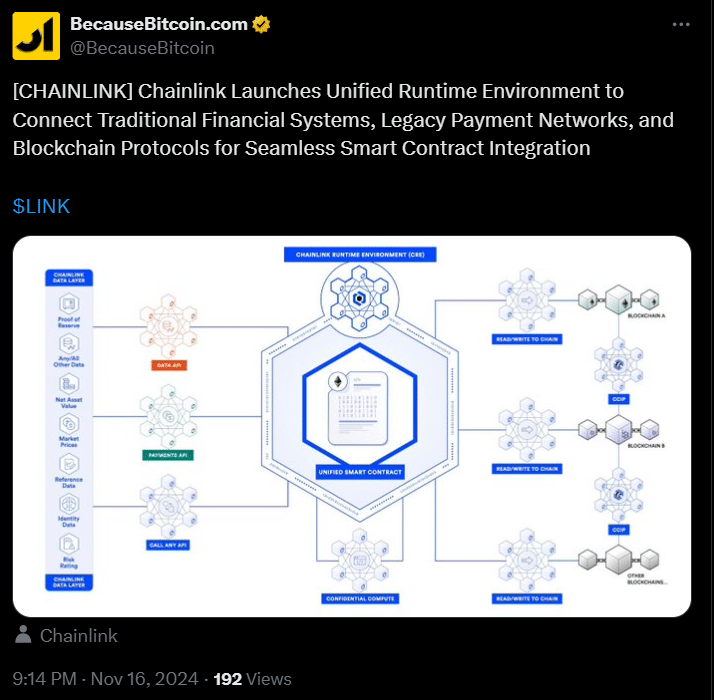Today, Chainlink announced the Chainlink Runtime Environment (CRE) framework designed to help banks, payment systems, and other traditional financial institutions connect smoothly with blockchain technology.
According to the press release, the CRE will replace older technologies like COBOL and the Java Runtime Environment (JRE). COBOL, introduced in 1959, was crucial in creating early financial tools like ATMs and electronic banking. Similarly, JRE, developed in the 1990s, became a backbone for online banking.

Both systems were revolutionary in their time, but they are no longer equipped to handle the demands of modern blockchain applications. By introducing the CRE, Chainlink is creating a unified, blockchain-compatible system to modernize these outdated infrastructures.
Moreover, the launch of the CRE comes amid Chainlink’s broader push to bring traditional finance into the blockchain ecosystem. Just last month, at the SIBOS banking conference, Chainlink announced a collaboration with SWIFT, the world’s leading interbank messaging system. allows banks to use SWIFT messages to connect with blockchain systems

In addition to its partnerships, Chainlink has earlier launched solutions like the Blockchain Privacy Manager and the Cross-Chain Interoperability Protocol (CCIP) last year to ensure businesses can use blockchain while keeping sensitive information secure.
Furthermore, Chainlink is also exploring the use of artificial intelligence (AI) alongside its oracles. This combination can create secure, tamper-proof records of financial activities, such as proof-of-reserves, giving companies and users greater confidence in their data.
With the CRE and its other projects, Chainlink is making it easier for banks and businesses to take their first steps into the blockchain world, promising a future where both systems can work together effortlessly.
Also Read: Franklin Templeton Expands FOBXX Fund to Ethereum Blockchain






